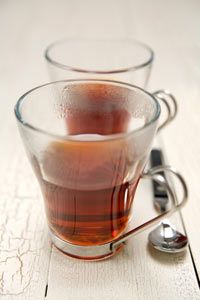Processing Tea
We know that there are four main types of tea -- green, black, oolong and white. They all look and taste differently, yet they all come from the same tea plant. This plant is capable, like anything with living tissue, of succumbing to oxidation. In this section we'll find out the role of oxidation by looking at the different steps of processing tea.
Black Tea
You are probably most familiar with black tea. It's the world's most popular type of tea, and it accounts for 75 percent of all production. Names such as "English Breakfast Tea" or "Earl Grey" commonly stock the shelves in grocery stores. Without milk, the drink has a reddish brown color and a particularly bold taste.
Advertisement
There are two ways to make black tea -- the orthodox method and the CTC ("Cut, Tear, Curl") method. Both are similar in the five steps they take, except the orthodox method is mostly done by hand, while the CTC method is done by machine. Remember, the workers have just transported the tea leaves from the plantation to the factory where the following steps will take place:
1. Withering - Tea leaves are spread out in large groups and left to wither, losing some of their moisture.
2. Rolling - In the orthodox method, the leaves are now rolled so the remaining moisture is released, coating the surface of the leaves with its juices. This method is particularly gentle, so the tea leaves are usually left whole and unbroken. The CTC method, however, chops the tea leaves into tiny pieces, and you're left with a more dust-like substance.
3. Oxidation - The leaves are spread out again, this time in a cool, damp atmosphere, and the oxidation process continues. The color of a tea leaf is originally green, but as oxygen reacts with the cell tissues, it begins to turn a copper color. This is very similar to tree leaves turning from green to brown in the fall.
4. Drying - The leaves are dried with hot air, and the color changes from copper to brown or black.
5. Sorting - The final process involves sorting the tea leaves by size and grade.
